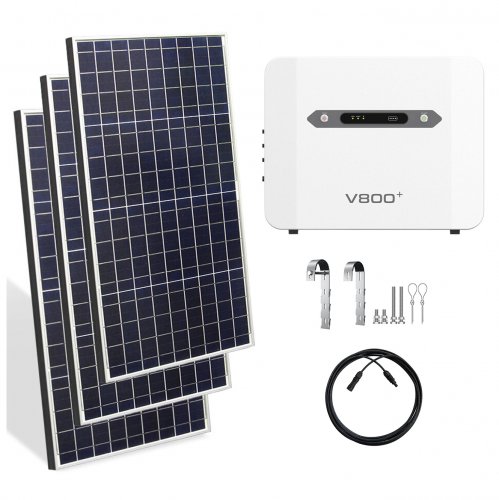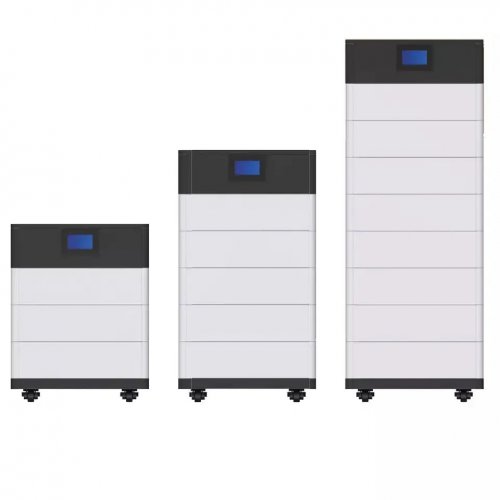Advances In Energy Storage Systems: Breakthroughs In Materials, Integration, And Grid-scale Applications
The global transition towards renewable energy sources is intrinsically linked to the advancement of energy storage systems (ESS). As the penetration of intermittent solar and wind power grows, the ability to store excess energy and discharge it on demand becomes paramount for grid stability, reliability, and efficiency. Recent years have witnessed remarkable progress in ESS technologies, moving beyond traditional lithium-ion batteries to encompass a diverse portfolio of solutions tailored for different durations and scales. This article reviews the latest research breakthroughs, emerging technologies, and future directions shaping this critical field.
Lithium-Ion Batteries: Pushing the Boundaries
While lithium-ion batteries (LIBs) dominate the portable electronics and electric vehicle markets, research continues to push their limits for stationary storage. The primary focus has been on overcoming challenges related to cost, energy density, safety, and cycle life. A significant breakthrough involves the development of silicon and silicon-oxygen composite anodes. Replacing traditional graphite, these materials offer a theoretical capacity nearly ten times higher, dramatically increasing the energy density of cells. Recent work by researchers like Liu et al. (2022) has demonstrated stable silicon-based anodes with over 80% capacity retention after 1000 cycles by using novel polymer binders and electrolyte additives to manage volume expansion during lithiation.
On the cathode side, the move towards nickel-rich NMC (LiNiₓMnуCo₂O₂, x>0.8) and lithium manganese iron phosphate (LMFP) chemistries reduces cobalt dependency—lowering cost and ethical concerns—while improving energy density. Furthermore, the commercialization of solid-state batteries represents a quantum leap in safety. By replacing flammable liquid electrolytes with solid ceramic or polymer conductors, risks of thermal runaway are significantly mitigated. Companies and research institutes are now solving the historical challenges of low ionic conductivity at room temperature and interfacial instability between the solid electrolyte and electrodes, bringing all-solid-state batteries closer to market readiness.
Beyond Lithium: The Rise of Alternative Chemistries
Recognizing the geopolitical and supply chain constraints of lithium and cobalt, research into alternative battery chemistries has accelerated. Sodium-ion (Na-ion) batteries have emerged as a viable, low-cost contender for grid storage. They operate on principles similar to LIBs but utilize abundant sodium resources. Recent advancements have led to cathodes with competitive energy densities and anodes based on hard carbon, showing excellent cycling stability. As noted by Hwang et al. (2023), the latest generation of Na-ion cells has achieved energy densities approaching 160 Wh/kg, making them suitable for applications where weight is less critical than cost and sustainability.
For long-duration energy storage (LDES), required to shift energy over days or weeks, flow batteries are particularly promising. Vanadium flow batteries (VFBs) remain the most mature technology, with new research focusing on optimizing electrolyte compositions and developing novel membranes to reduce costs and crossover. Even more significant is the progress in organic and aqueous organic flow batteries. These systems utilize sustainable, tunable organic molecules, potentially offering a much cheaper and more scalable solution. A recent study published inSciencedetailed a new quinone-based molecule that demonstrated exceptional stability over thousands of cycles, highlighting the potential of designer molecules for future flow batteries (Jan et al., 2024).
Integration and System-Level Innovations
Technological progress is not limited to electrochemistry. Advances in system integration, power electronics, and digitalization are equally crucial. The development of smarter, more efficient Battery Management Systems (BMS) that leverage artificial intelligence and machine learning allows for precise state-of-health (SOH) and state-of-charge (SOC) estimation. This predictive capability optimizes performance, prolongs lifespan, and enhances safety by anticipating potential failures.
Moreover, the concept of hybrid energy storage systems (HESS) is gaining traction. By coupling high-energy-density batteries (e.g., LIBs) with high-power-density devices like supercapacitors, a HESS can efficiently handle both high-energy and high-power demands, reducing stress on the primary battery and extending its life. Advanced power conversion systems and grid-forming inverters are also being developed to allow ESS to provide critical grid services like inertia and black-start capability, traditionally offered by fossil-fuel generators.
Future Outlook and Challenges
The future trajectory of ESS is set towards multi-technology ecosystems. No single technology will serve all needs; instead, a combination of short-duration (e.g., LIBs), long-duration (e.g., flow batteries, compressed air), and seasonal storage (e.g., hydrogen) will be integrated into the grid.
Key challenges remain. For batteries, reducing reliance on critical raw materials through advanced recycling and circular economy models is a top priority. Second-life applications for retired EV batteries offer a promising pathway to reduce waste and lower the cost of stationary storage. For LDES, the primary hurdle remains economic; achieving Levelized Cost of Storage (LCOS) that is competitive with fossil-fuel peaker plants is essential for widespread adoption.
Finally, the role of policy and market design cannot be overstated. Creating regulatory frameworks that value the full suite of services provided by ESS—from energy arbitrage and frequency regulation to capacity reserves and resilience—is critical to incentivize further investment and innovation.
In conclusion, the field of energy storage is experiencing a period of unprecedented innovation. From the chemistry lab to the grid edge, breakthroughs in materials, system design, and digitalization are paving the way for a more resilient, efficient, and renewable-powered future. Continued interdisciplinary collaboration between material scientists, engineers, economists, and policymakers will be the key to unlocking the full potential of these transformative technologies.
Customized/OEM/ODM Service
HomSolar Supports Lifepo4 battery pack customization/OEM/ODM service, welcome to contact us and tell us your needs.


HomSolar: Your One-stop LiFePO4 Battery Pack & ESS Solution Manufacturer
Our line of LiFePO4 (LFP) batteries offer a solution to demanding applications that require a lighter weight, longer life, and higher capacity battery. Features include advanced battery management systems (BMS), Bluetooth® communication and active intelligent monitoring.

Customised Lithium Iron Phosphate Battery Casing
ABS plastic housing, aluminium housing, stainless steel housing and iron housing are available, and can also be designed and customised according to your needs.

HomSolar Smart BMS
Intelligent Battery Management System for HomSolar Energy Storage System. Bluetooth, temperature sensor, LCD display, CAN interface, UART interface also available.


Terminals & Plugs Can Be Customized
A wide range of terminals and plugs can be customised to suit the application needs of your battery products.

Well-designed Solutions for Energy Storage Systems
We will design the perfect energy storage system solution according to your needs, so that you can easily solve the specific industry applications of battery products.



About Our Battery Cells
Our energy storage system products use brand new grade A LiFePO4 cells with a battery lifespan of more than 4,000 charge/discharge cycles.



Applications in Different Industries
We supply customized & OEM battery pack, assemble cells with wiring, fuse and plastic cover, all the cell wires connected to PCB plug or built BMS.
Applications: E-bike, Electric Scooter, Golf Carts, RV, Electric Wheelchair, Electric Tools, Robot Cleaner, Robot Sweeper, Solar Energy Storage System, Emergency Light, Solar Power Light, Medical Equipment, UPS Backup Power Supply.
We can provide you with customized services. We have the ability to provide a vertical supply chain, from single cells to pack/module and to a complete power solution with BMS, etc.


HomSolar (Shenzhen) Technology Co., Ltd
























